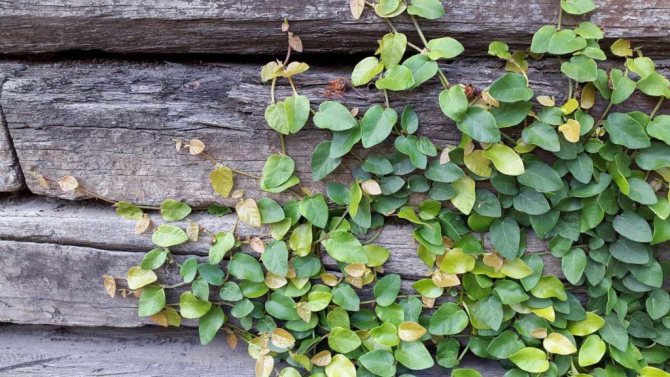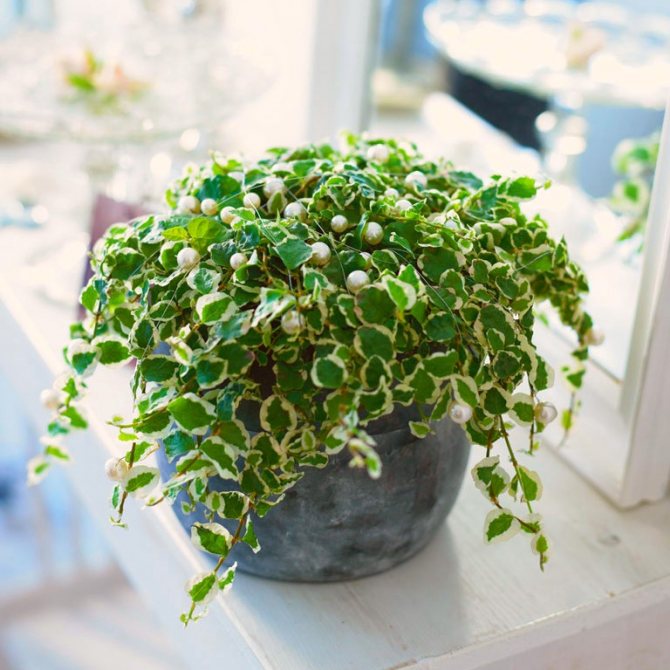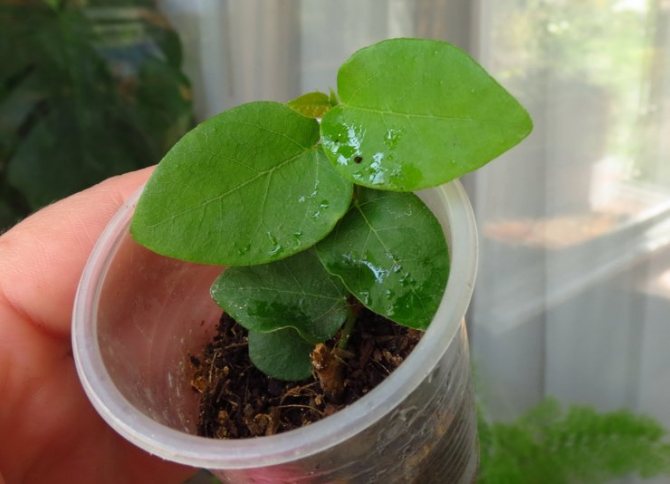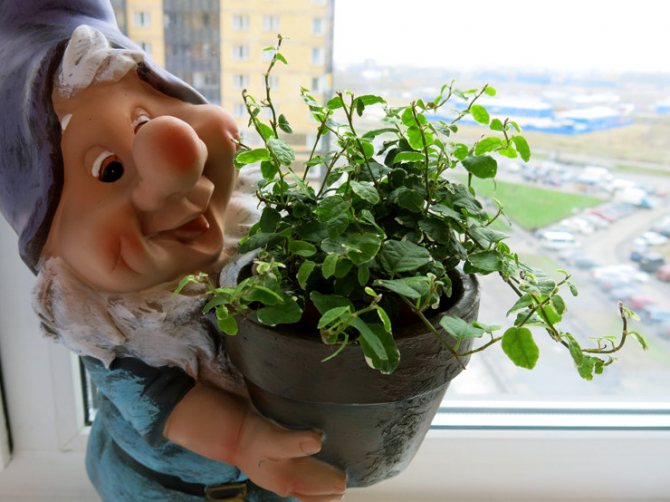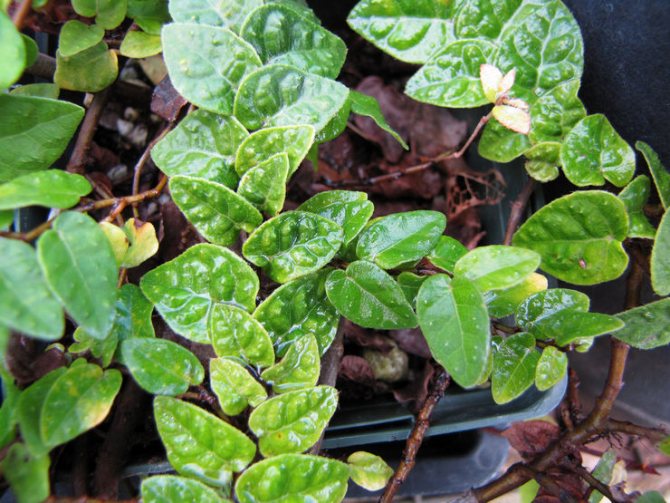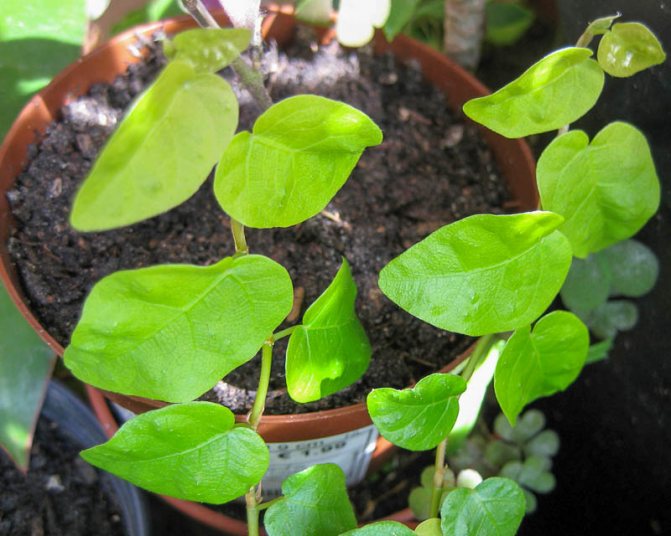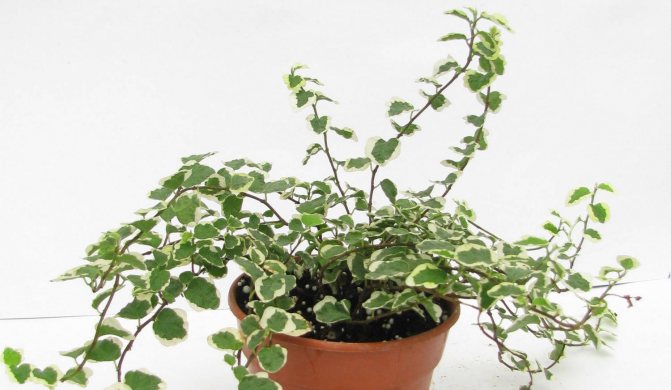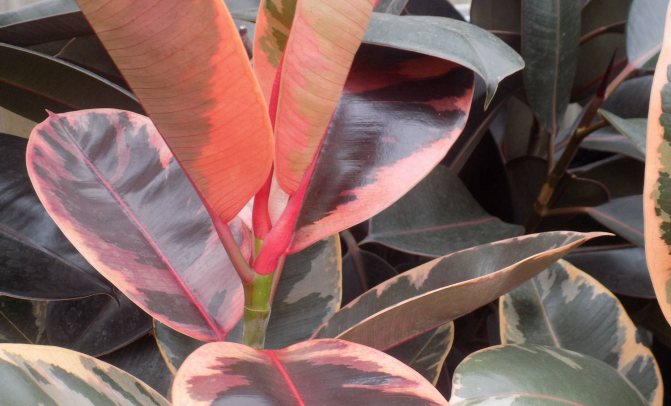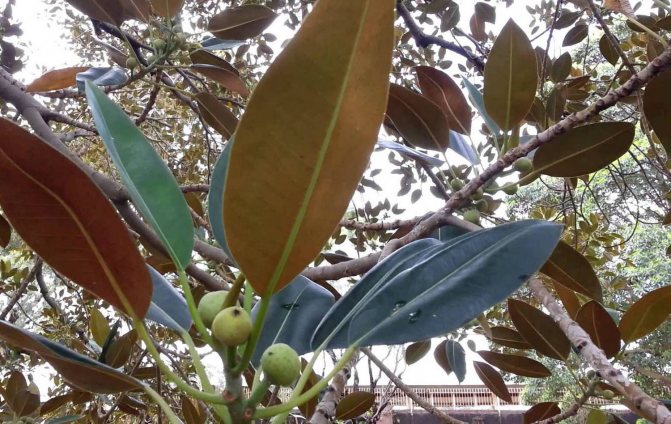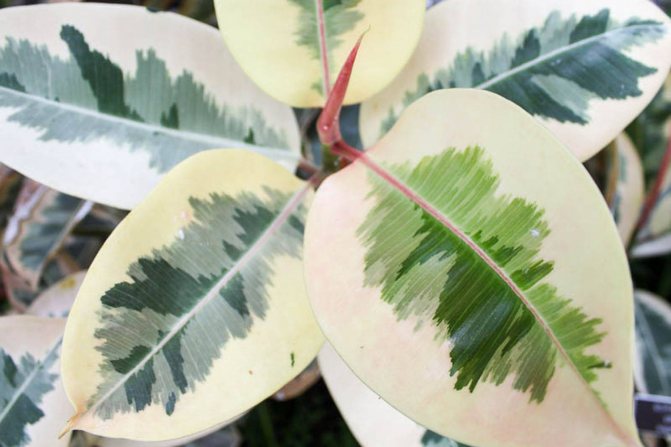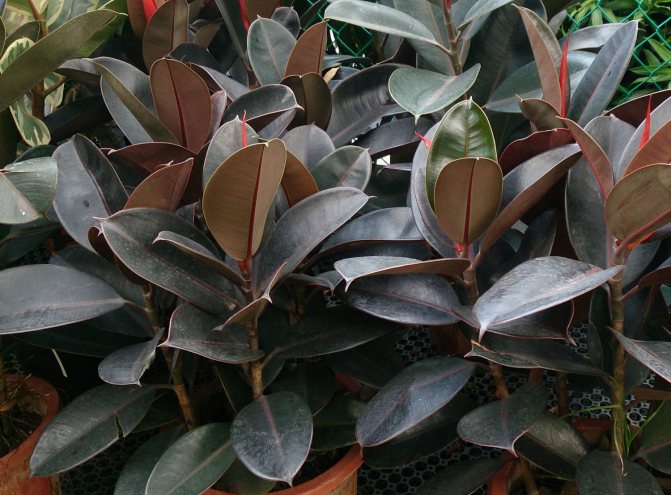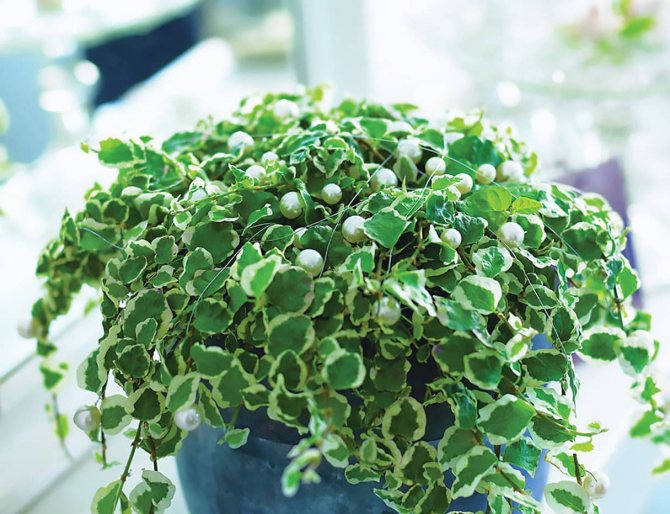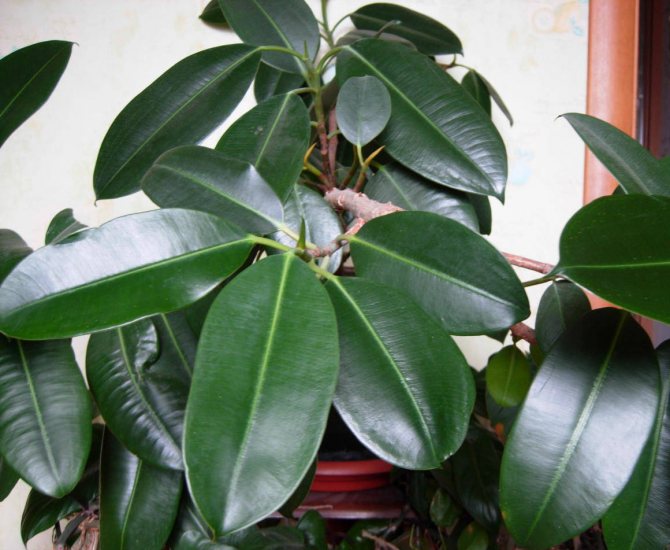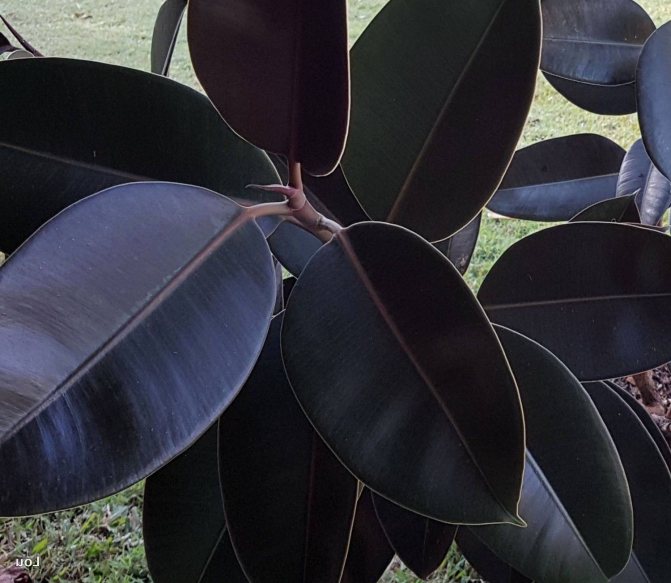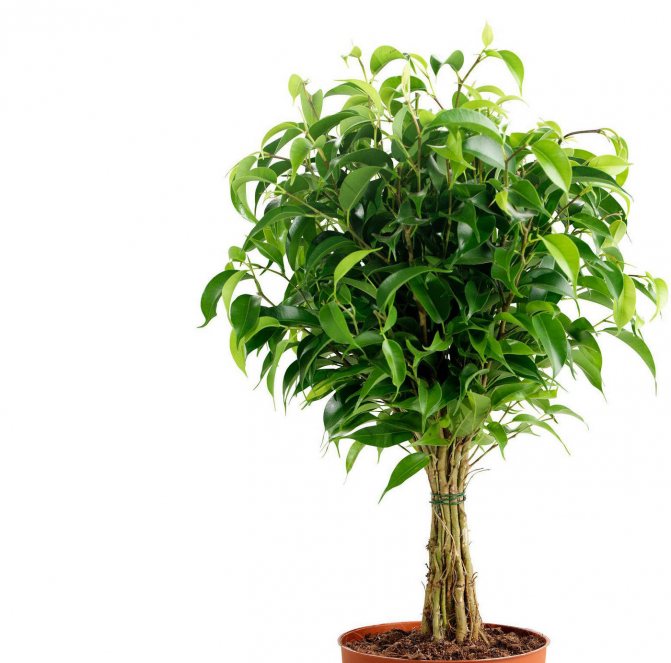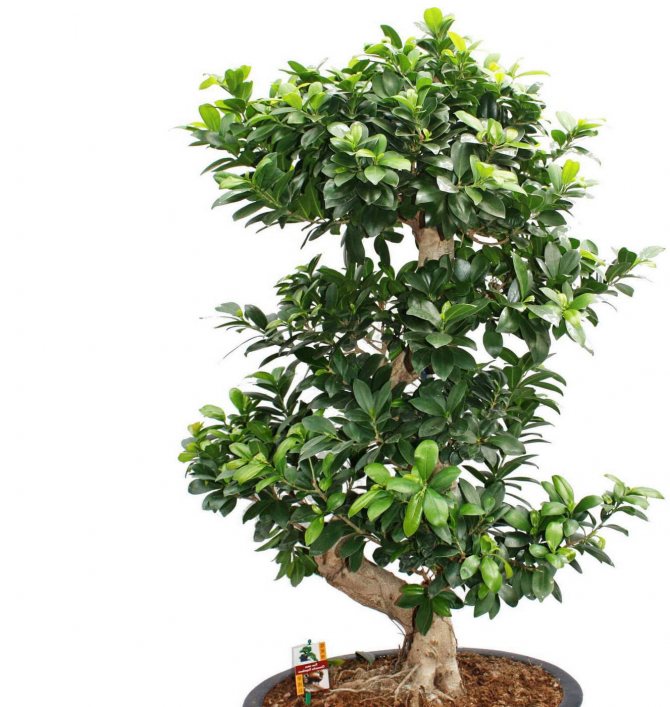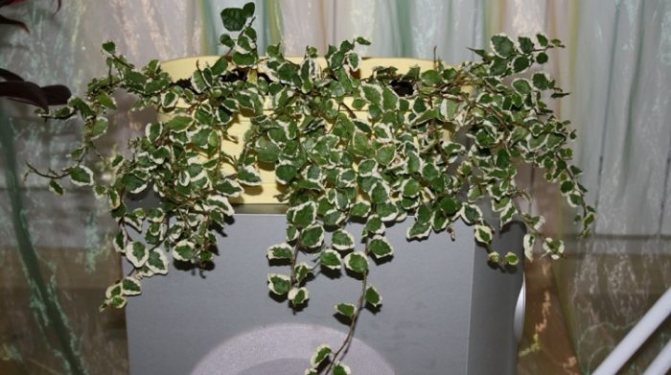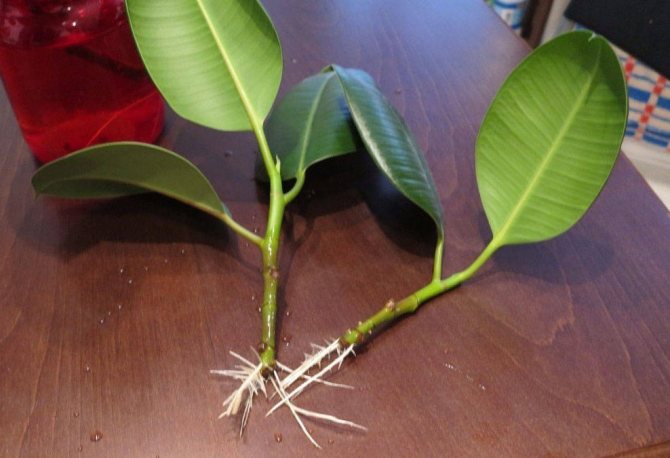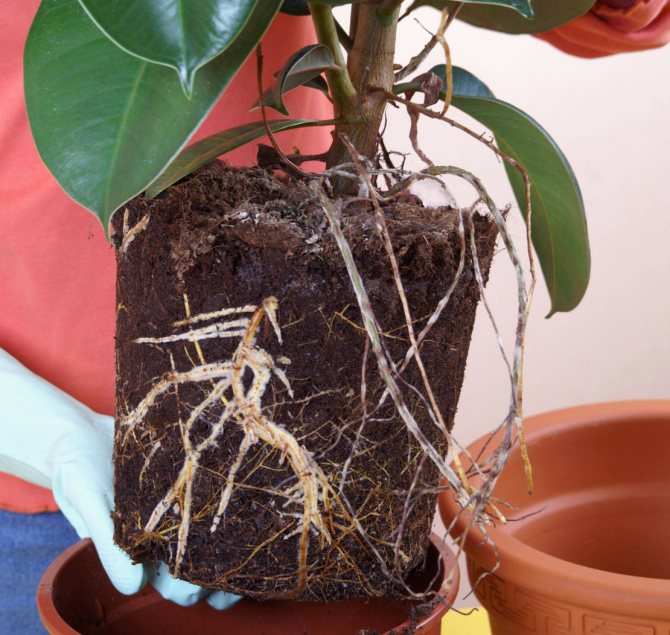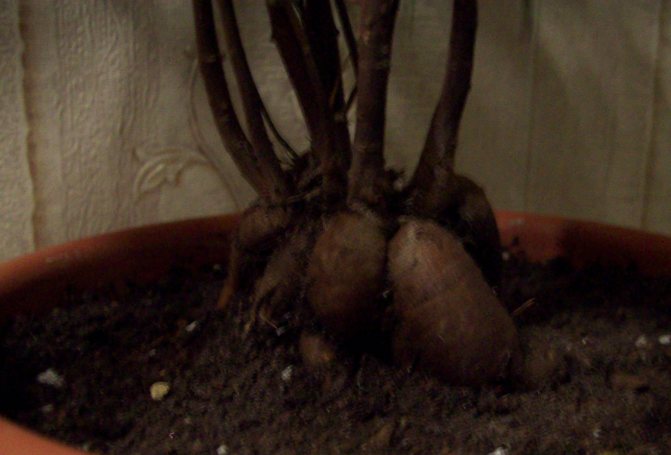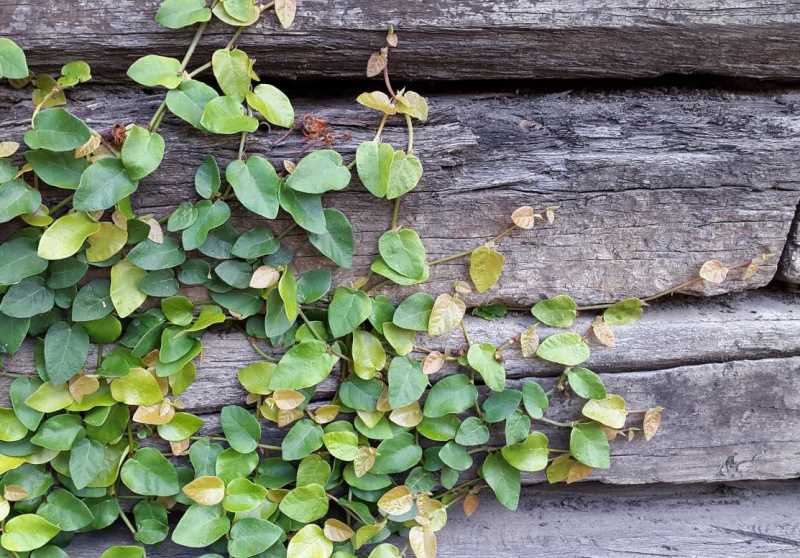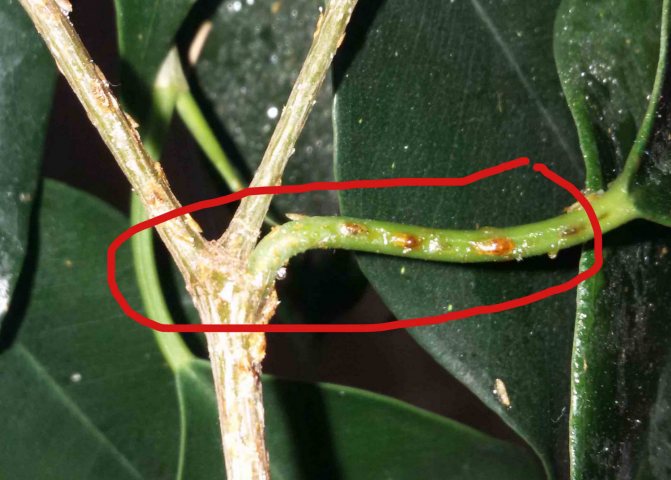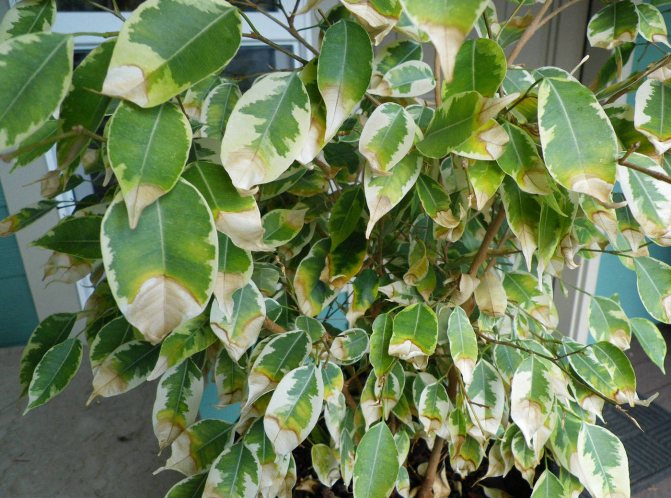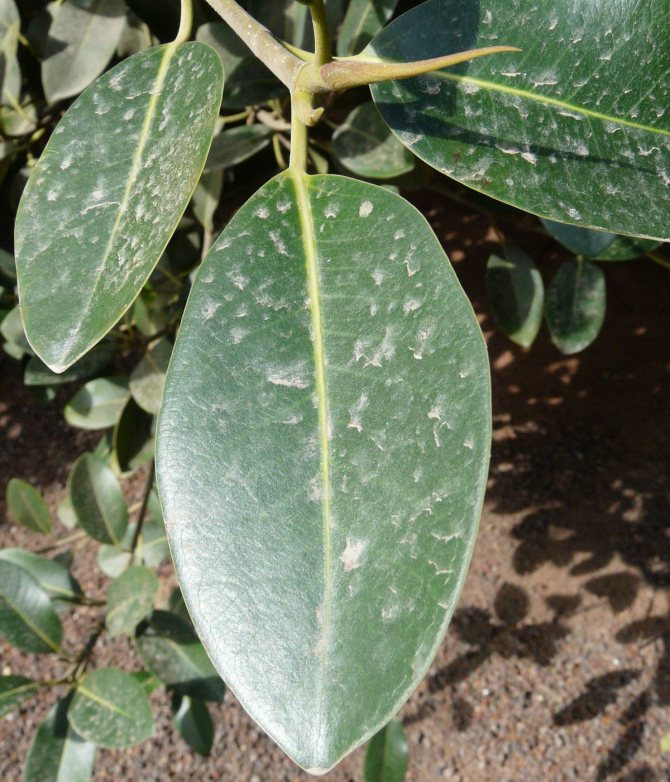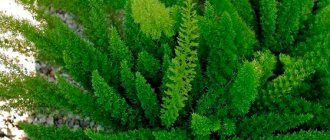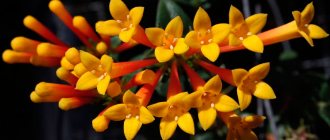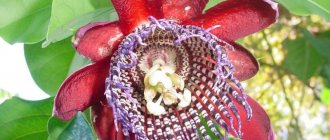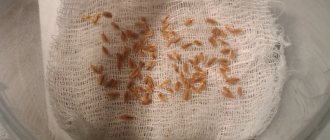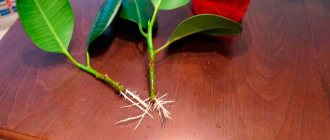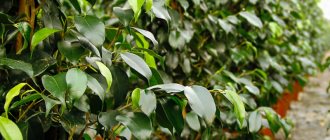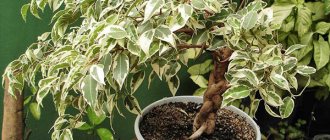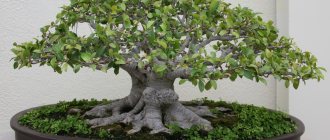Dwarf ficus, or tiny (Ficus pumila L.), synonyms - creeping ficus (F. repens Hort), stipular ficus (F. slipulanta Tbunb.) Grows in humid tropical and subtropical forests of Southeast Asia, including Taiwan, Vietnam, Philippines, several varieties of tiny ficus found high in the mountains - at an altitude of 2000 meters above sea level.
Dwarf ficus is an evergreen woody liana or creeping shrub up to 2.5 - 4 meters high. Due to the adventitious roots formed on the shoots, the ficus easily takes root and spreads quickly, easily mastering the mountain rocks. It grows calmly like an epiphyte.
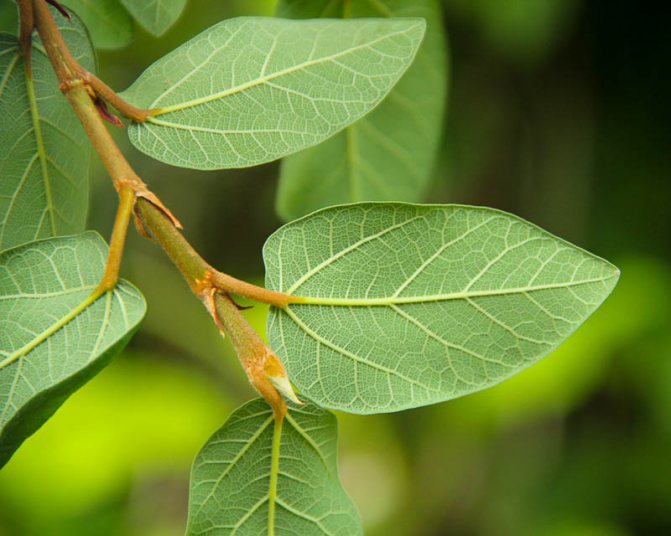
Its young tender thin shoots with small leaves are difficult to associate with thick fruiting shoots, the leaves on which are also much larger. Sometimes it seems that these are two different plants. Young and thin shoots grow to a sufficient length, and only when these shoots take root, they feel reliable support, then horizontal shoots begin to form, on which adult leaves grow.
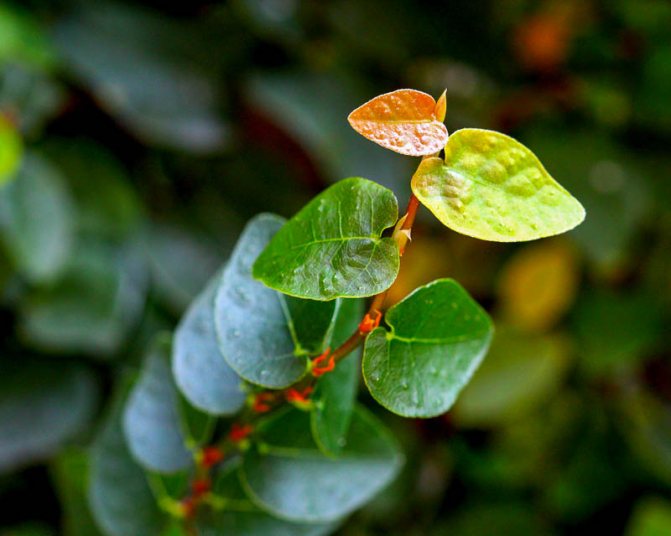

On old thick shoots of dwarf ficus, the leaves are thick-skinned, dark green on the upper side, on the lower side the leaf plate is light green, pubescent (unlike young ones), up to 10 cm in length and up to 6 cm in width. Dwarf ficus is pollinated by only one species of fig wasps, Blastophaga pumilae. Compound fruits of the ficus are tiny yellow, can be reddish, overripe syconia are dark purple, almost black.
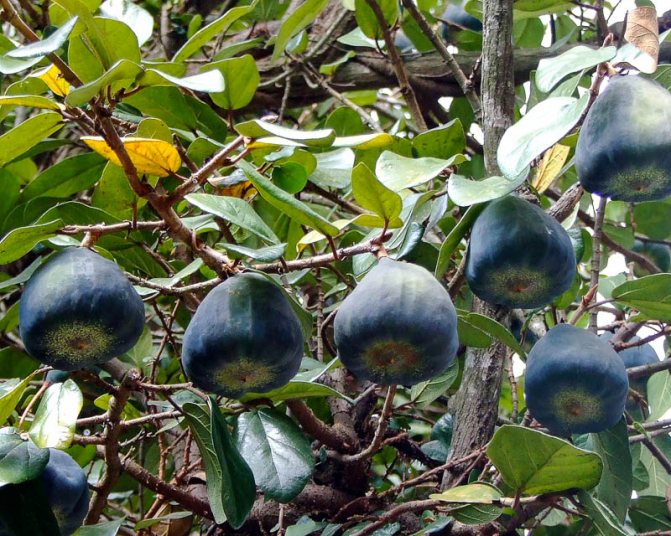

And we are more familiar with a young dwarf ficus with small, non-skinned, almost oval, leaves on short petioles, up to 3 cm in length and up to 2 cm in width, alternate arrangement of leaves on the shoots, very small, brown stipules, petioles no more than 4 mm, which we are happy to keep in room conditions.


Dwarf ficus, or tiny - one of the most beautiful ficuses, it grows very quickly, it is considered an unsurpassed climber among other climbing ficuses, and is even resistant to small subzero temperatures. It winters outdoors on the Black Sea coast of the Caucasus.
Dwarf ficus is planted in countries with warm climates as a ground cover or ampel plant. It is widely used for vertical landscaping of houses, hedges, as well as for braiding frames or various decorative figures.
Recently, however, more and more often you can hear that this is a rather aggressive plant, it easily takes root, grows very quickly, it is difficult to remove it from the support, it is almost impossible to completely destroy it, it can even destroy buildings. They even joke that it is dangerous to turn your back on him, since you just have to turn away, as he will at the same moment destroy the shed or attack the dog)). This is, of course, a joke, but wooden supports are really not recommended for it, since the roots of the tiny ficus can grow through the tree.
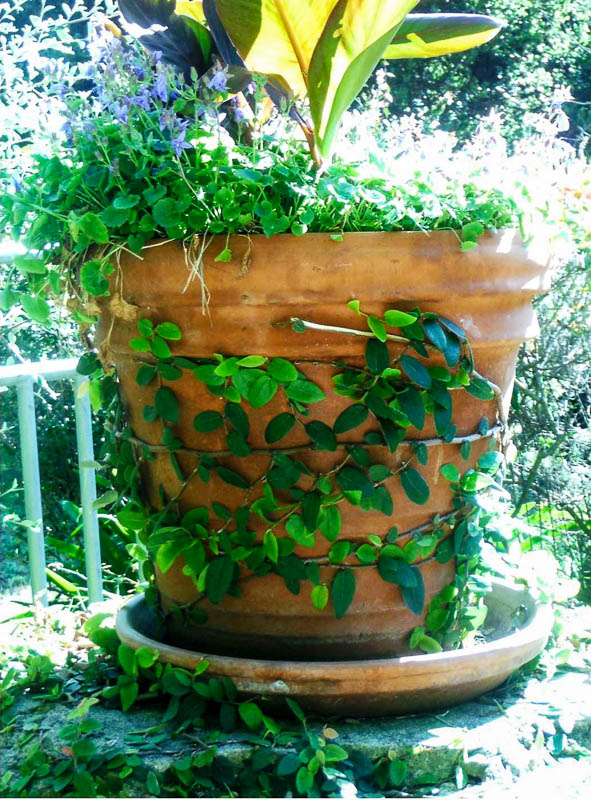

Dwarf ficus care
Temperature: moderate, optimal in the range of 20-25 ° C, in winter it is possible to keep it at lower temperatures around 12-14 ° C, with limited watering, the limit is 8 ° C with a dry content. Although in natural conditions, the tiny ficus can withstand lower temperatures, and even small frosts.
Lighting: Ficus Pumila grows well in bright, diffused light with some sunlight.The east and west windows are suitable, shading is required only at noon hours. It grows well under artificial lighting. Variegated ficus is more light-requiring. If the ficus lacks light, it can grow new shoots without leaves.
Watering: quite abundant, this is a rare ficus that does not tolerate complete dryness of the earth, it should always be slightly damp, but dry up on top before the next watering. In order not to turn the pot of earth into a swamp, drainage is poured at the bottom. In winter, watering is limited, after the ground in the upper part of the pot dries out, wait another 3-5 days with another watering. In general, watering should be of such a frequency that the soil does not dry out completely - into dust.
Top dressing with fertilizers: from March to August, once every two to three weeks, you can fertilize with fertilizers for decorative deciduous plants. Anything will do - Pocon, Uniflor-growth or Uniflor-micro or Merry Flower Girl.
Air humidity: the leaves need to be sprayed, especially in summer in hot dry weather, and if washed during the heating season, the ficus pumila is very easily attacked by a spider mite from dry air.
Transplant: carried out annually in spring, in fresh soil. Potting soil: 2 parts leafy soil, 1 part peat soil, 1 part sand and 1 part well-decomposed compost. You can also use leafy soil in its pure form, ficuses grow well in universal soil from the store. The acidity of the soil is from weakly acidic to very weakly alkaline (pH 5.5-7.5). Ficus does not tolerate alkaline and too acidic substrates.
A pot of any material, not deep, but wide enough. Focus on these proportions - the width of the pot and the height are about the same. The roots of the ficus dwarf are scabrous, but easily torn, shallow. If, when transplanting, the old clod of earth is too strongly entwined with roots, do not tear it apart, just transplant it into a larger pot, and add humus earth rather than ordinary soil.
Air humidity and watering
Watering should be done in moderation but regularly. Ficus tiny does not tolerate overdrying, since its weak roots are not able to receive the remaining water from the soil, and excessive moisture threatens that the roots will begin to rot. The ground should be sufficiently moist, but not too flooded with water. For these purposes, soft purified or settled water is best suited. During the summer period it is necessary to water it with warm water. If the level of humidity in the room is insufficient, it is necessary to regularly spray the leaves of the plant with slightly warmed water.
Reproduction of ficus pumila
Pumila ficus cuttings root easily in water, earth or wet vermiculite. You can also make a layering, for this, next to the ficus pot, put another pot of earth, the ficus branch is not cut off, but taken to another pot, and pinned to the ground (you can use a piece of wire or a paper clip). The ground with the layering is kept constantly moist.
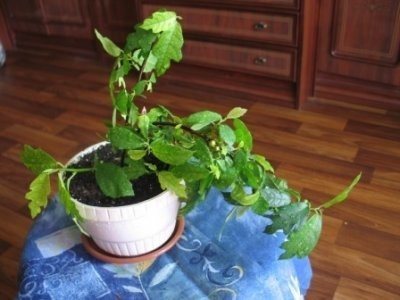

Nowadays, residents of big cities often lack communication with nature.
The reason for this, including the lack of time.
Someone would like to start something like that, but there is no experience in care.
Ficus "Creeping", he dwarf is just right, caring for it does not require much experience and the effect will be amazing, and we will talk about it.
Watering correctly
Proper care is, of course, proper watering. Ficus is a moisture-loving plant, so you need to water it often, but it is important not to overdo it. Stagnant water is dangerous - it causes root rot, but no less dangerous is the drying out of an earthen coma. The root system is not powerful enough, it is not able to receive moisture from the bottom of the pot, so the ficus may die. Excess water from the pallet visas must be discarded immediately.
Chlorinated water cannot be used for irrigation, the water is defended, it must be soft and warm.
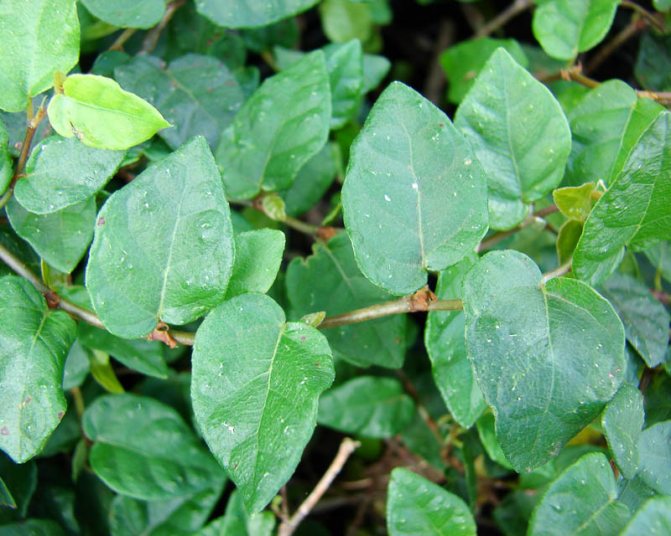

Ficus is watered less frequently in winter than in summer.Before watering, it is recommended to make sure it is necessary. To make the plant comfortable, and it does not give you much trouble, organize drip irrigation.
Origin story
Ficus "Creeping" - Ficus Sagittata, better known as Ficus dwarf - Ficus pumila.
Family: Mulberry - Moraceae.
Homeland: Wet subtropical regions of China and Japan.
This type of ficus has become popular due to the properties of its graceful shoots, which curl rapidly and at the same time have numerous additional roots.
The leaves of this ficus are rough to the touch, wrinkled, painted bright green, heart-shaped and reticulate on the surface.
Like lianas, a plant can put its root even in the narrowest crack in the body of a neighboring tree, growing to large sizes, one individual can cover several square meters.
Age-related variability is a feature of this species: small, long on average 2.3 cm. and wide 1.5 cm. the leaves at the base of the shoots are asymmetric and rounded, become noticeably larger, reaching 10-11 cm in length, and at the same time become coarser, retaining their original oval shape with small veins protruding from the lower side.
This species has one drawback.
What should be the soil
If you want to create the perfect option, prepare a mixture of equal parts of leaf, turf, peat soil and coarse sand. Those who find it troublesome can use a universal primer purchased at a flower shop.
Do you want the right care? In this case, information on how the tiny ficus reproduces and how to transplant it will be useful to you.


Home care
Caring for ficus is quite simple, even a beginner grower can handle it, it is necessary to introduce special substances to fertilize the soil, it should start from about mid-spring and continue until the end of the summer season.
As a rule, they are used once two weeks, periodically doing top dressing, but moderation should be shown here, since due to the introduction of an excessive amount of fertilizer, the plant may begin to lose foliage.
If ficus is grown in phyto filters, then only potash fertilizers should be applied. (KO, KNO3 or KSO4), all the necessary plant will take itself.
You should not use complex fertilizers, they will wash off with the water into the aquarium, and this will lead to an increase in the salinity of the water, and the lack of potassium will remain.
If, for example, when starting the ficus will show signs of starvation, then it would be best to dilute micronutrient fertilizers in liquid form and drip 6-8 droplets directly below the root.
When performing this operation, the filter is turned off for half a day, and potassium must still be given to the plant at the same frequency.
In the cold season, dwarf ficus is best kept in fairly cool conditions.
Temperature
Capable of surviving temperature from -10 to +25 ° C. But this is to a certain extent extreme. To achieve success, you must observe a moderate temperature regime.
In order for your pet to grow well and be healthy, you should choose a bright place, away from exposure to open sunlight, humid and warm.
At elevated temperatures, ficus requires regular spraying with warm water - dwarf ficus does not tolerate dry air poorly.
Watering
Under normal conditions, the watering regime for your pet is especially important during the formation of the shoot, at which time the death of a small ficus from a lack of moisture is most likely.
It is extremely important to take into account that when planting in a pot, you must use special pegs to support young shoots.
A lot of moisture cannot harm the plant, but it is best to place it on a stand filled with water.
We comply with temperature requirements
In the warm season, the temperature in the room where it grows should not be higher than 16-25 degrees, and in winter - not lower than 8C, watering is moderate, and the humidity is not high. In the summer, you can arrange a vacation for your green tenant - take it out into the garden or on the terrace, but put the pot not in a draft and away from direct sunlight. Being outdoors, there is a risk that insects will settle on the leaves, therefore, when returning the plant to the house, arrange for it to quarantine.
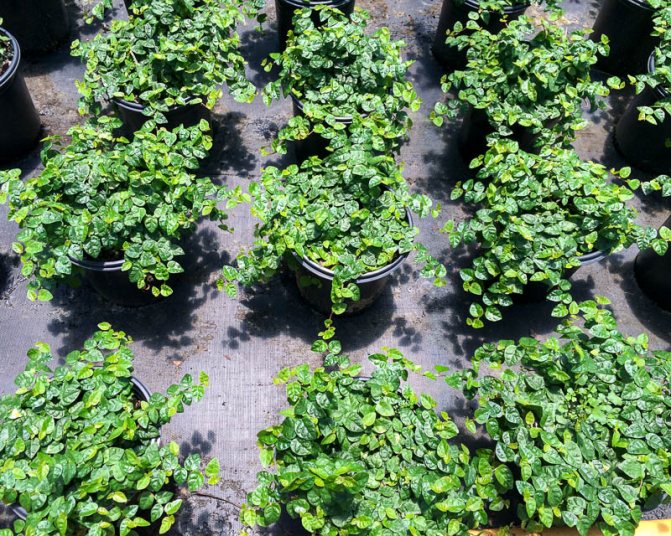

Diseases and pests
Most often, this plant suffers from attacks of spider mites, thrips and scale insects also damage your ficus in a vulnerable period.
The methods of combating these parasites are the same as those of phytonia: treatment with phytoverm, derris, actellik and fufanom, these substances are generally often used in pest control.
If the foliage began to fall off and turn yellow, this is a sign that the tree could get sick, or it feels bad. There may be several reasons for this.
We urgently need to look for another, more suitable place.
It is better to remove it from the heating batteries and humidify the air at least once a day. The ficus is also very "afraid" of the draft.
In addition, lack of moisture and increased room temperature
can also attract spider mites and scale insects.
How to determine in a timely manner that this particular ailment happened to your ficus? If the leaves began to become covered with dark, hard spots, have lost their color and fall off, this is a sure sign of a scale insect.
These insects parasitize the entire plant and feed on its juices.
To get rid of this misfortune, you need to prepare a weak soapy solution and literally wash off the shield with cotton wool soaked in the prepared solution.
If the plant has a large lesion area, then actellic will help in the ratio 15-20 drops per 1 liter of water.
If all these simple rules are followed, the ficus "Creeping", it is also a dwarf one, will bring you joy for a long time and decorate your home, being a piece of nature, which is now so lacking in our city dwellers.
If you find an error, please select a piece of text and press Ctrl + Enter.
Among the plants that today decorate almost every self-respecting office, one cannot fail to note the ficus. The beauty and unpretentiousness of this flower from the mulberry family ensured it immense popularity among lovers of home (and office) flowers. Among the many types of culture, one cannot fail to note one, which, unlike others, is not a shrub, but rather a creeping and climbing plant. This is the creeping ficus or Ficus Sagittata.
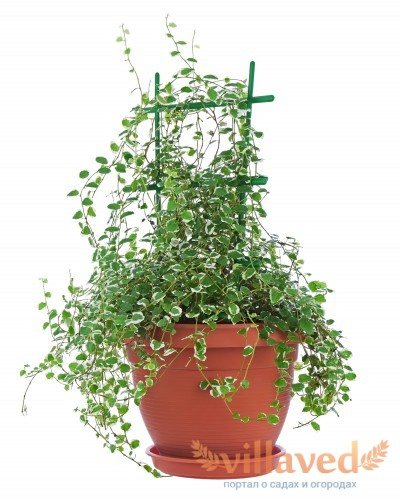

We monitor the humidity
The plant is unpretentious and hardy, sufficient moisture is the main condition for its good growth. High humidity is an important condition under which the aerial roots of the plant will grow and be able to cling to the supports. To maintain this, the ficus is regularly sprayed with warm boiled water, this is important not only in summer, in dry weather, but also in winter, when heating devices are working in the room.
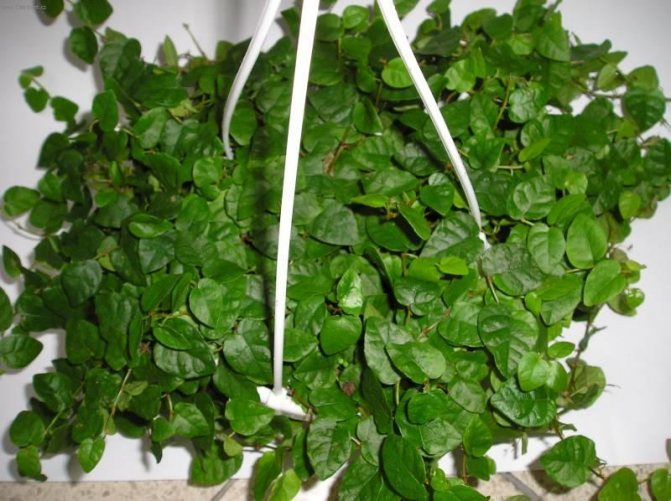

Caring for ampelous ficus will be correct if you take it off once a week and keep it under a warm shower for several minutes. Such procedures will not only refresh the plant, but also wash away dust and debris from it.
Features of creeping ficus
The homeland of this species is the humid subtropics of China and Japan. This is a shrub whose shoots twist very beautifully and gracefully. In addition, each of them is equipped with many additional roots. The leaves of these plants are wrinkled and rough, heart-shaped and with a mesh pattern. At first they are small, about 2 x 1.5 cm, but then they can grow to almost 10 cm in length.
In relation to flowering, axillary inflorescences can be observed, which are divided or, conversely, grouped. In some cases, they can form the brush itself on the leafless shoot or simply the final spike.The receptacle of a plant is a hollow ball or "pear" with a hole at the top, inside which there are male and female flowers, together or separately.
In its behavior in nature, it resembles a liana a little: it can launch its roots into the smallest cracks in the crowns of neighboring plants and trees and begin to grow to a rather impressive size. In many photos, you can see individuals that occupy areas of up to several square meters.
Description:
The name of the ficus is Ficus ampelous, the pumila comes from the Latin pumilus - small, due to the small size of the leaves.
It is a climbing or ground cover strongly branching herbaceous perennial with thin woody stems. Creeping along the ground or climbing tree trunks, fixing itself on the bark with the help of thick aerial roots developing in internodes, the plant can cover an area of up to 4 square meters with a thick carpet. meters.
The leaves of a young dwarf ficus are small, 2 - 3 cm long, short petiolate, on the stem are arranged alternately. The leaf plate is simple, oval, whole-edged, with a slightly heart-shaped base. The surface of the leaf is leathery, dense, vesiculate-wrinkled. With age, the size of the leaves changes somewhat and on adult shoots they reach a length of 5 - 7 cm.
It is on such shoots that light green berry-shaped inflorescences-syconia are formed, similar to small pears measuring 5 × 3 cm, after ripening they acquire an orange color. At home, the ficus of age shoots does not form or bloom. They are light green spherical or pear-shaped, about 3 cm in diameter, orange when ripe, not eaten, but in the East (Vietnam. China, Japan) are used in folk medicine.
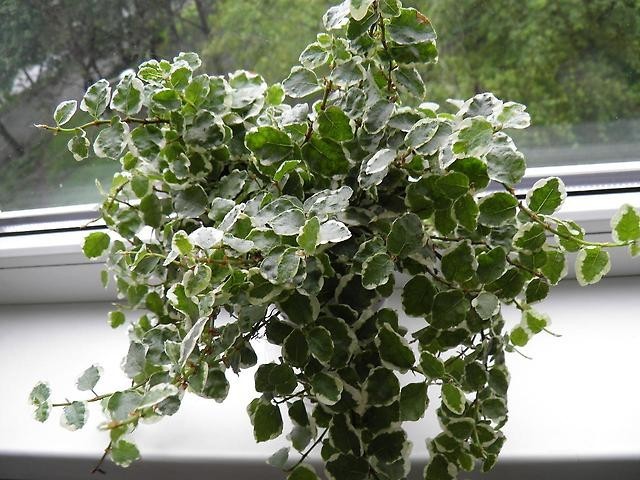

ampelous ficus
In indoor floriculture, variegated varieties of Ficus dwarf are most popular.
The most common ones are:
Sunny - there is an uneven, intermittent creamy-white border along the edge of the leaf;
White Sunny - unlike the Sunny variety, the border along the edge of the leaf is continuous;
Dorte - creamy white spots are scattered on the green background of the leaf plate.
Lighting and temperature
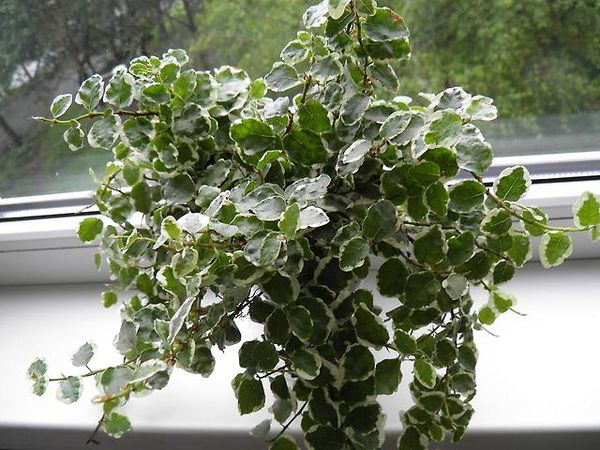

Dwarf ficus loves diffused sunlight, can live in partial shade, but in two-color varieties, with a lack of lighting, the color will firmly establish green. Therefore, it is better to choose eastern or western window sills for them, on the south side you will have to shade or move away from the window by 1 meter. The lack of lighting can be replenished with fluorescent lamps, if this is not done, then you can get not only a loss of decorativeness in variegated ficuses, but ampelous plants can form shoots without leaves at all.
The comfortable air temperature for dwarf pets should be between +18 and +25 degrees, in winter it is lowered to + 12-14 degrees, with a mandatory reduction in watering. I must say that this is important only for indoor conditions, in nature, creeping ficuses easily tolerate even negative temperatures, but there they have completely different roots.
The winter period of dormancy should be arranged with a decrease in temperature, cessation of fertilizing and a reduction in watering, but the illumination in winter should remain at the same level.
Planting and transplanting
A transplant for an indoor flower is always stressful, so it is recommended to carry it out in March. At this time, the plant is just beginning to move into the active growth phase and it is much easier to adapt to the new soil.
Up to 5 years old, the dwarf Pumila is transplanted annually, later you can refuse to regularly carry out this procedure. An adult, mature plant is transplanted as it grows.
Reference! The need for transplanting is evidenced by the degeneration of the shoots and the appearance of a large number of old leaves of a smaller size.
Drainage must be added to the pot for planting and transplanting Pumila. As a material you can use:
- broken clay pot (small fragments);
- expanded clay;
- pieces of brick;
- small pebbles collected on the street.


Before placing in a pot, drainage must be kept in boiling water for 5-10 minutes. This applies to gravel and stones taken from the street. Hot water will get rid of bacteria and parasites that may be on the mineral.
The soil for planting should contain peat, sand and leafy soil. It is made at the rate of 2 parts of land and 1 each of peat and sand. Too alkaline or acidic mixtures should be avoided.
Interesting! The material from which the pot is made does not matter.
It should be borne in mind that the roots are easy to damage. They are scrubbed in structure and tear easily. If, after removing the ficus from the old pot, it is found that the roots are tightly wrapped in an earthen ball, you should not try to separate them. Better to transplant the flower as it is. Over time, the roots will spread out more freely on their own.
Fertilizer
First of all, the plant needs feeding during periods of active growth, which fall during the warm season. Among the products of the domestic manufacturer, one can single out the Izumrud fertilizer. It is a balanced plant food that contains 2 active components: magnesium and nitrogen.
Such elements are responsible for the accelerated growth of foliage and protect the crown of the ficus from aging. It is extremely important to follow the rules of plant fertilization, which are set out in the instructions for the product. An excess of minerals can seriously injure the roots of the ficus.
Varieties
Pumila ficus varieties differ mainly in color and leaf shape. Of uniformly colored varieties, the following are distinguished:
- Ficus pumila Green Sunny - oval-heart-shaped leaves, evenly colored, delicate light green color.
- Ficus Pumila Anouk - rich emerald green leaves, larger than other varieties, elongated oval.
- Ficus Pumila Dubolistny (Ficus pumila quercifolia) - light green leaves resembling oak in shape.
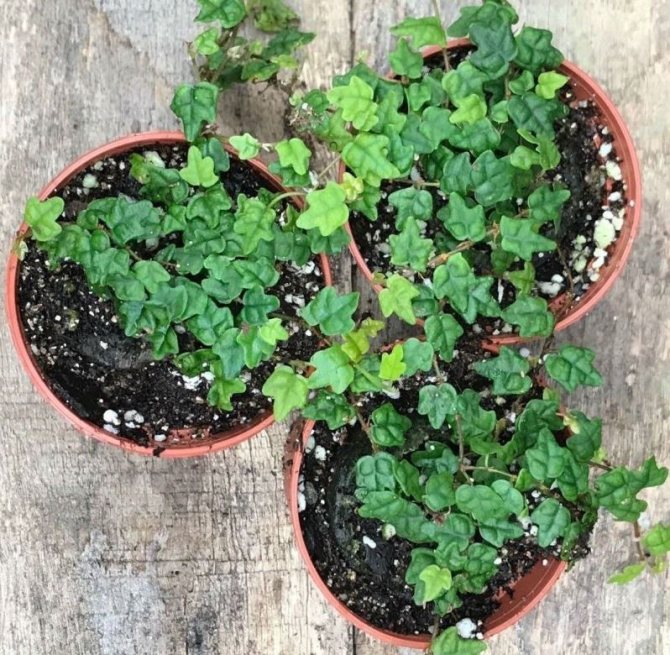

Ficus Pumila Dubolistny (Ficus pumila quercifolia)
In indoor floriculture, variegated dwarf variegated varieties are considered the most decorative, the most common of which are:
- Ficus Pumila White Sunny (ficus Pumila white Sunny) - with a wide continuous almost white border along the edge of the leaves.
- Ficus Pumila Sunny - with an intermittent creamy border.
- Ficus Pumila Snowflake - with a wide bright white border.
- Ficus Pumila Dort (Dorte) - light green with golden splashes.
Home care for all species is the same. Let's consider what you need to pay attention to first.
Benefit and harm
Dwarf ficus has several positive characteristics besides its decorative function.
The plant contributes to:
- air purification;
- normalization of the indoor climate.
However, ficus can harm a person.
Before buying a ficus, you should pay attention to the following harmful factors:
- the plant secretes milky juice, which, even in small quantities, can cause a reaction in people with a predisposition to allergies;
- ficus can aggravate the symptoms of diseases associated with the respiratory system.


Therefore, for people with a history of bronchial asthma or other similar pathologies, it is better to refuse to buy a flowerpot.
Did you know? The inhabitants of the island of Taiwan prepare jelly from the seeds of one of the species of this ficus.
Options for flower arrangements with ampel curl
Pumila takes root well both in normal indoor growing and outdoors in hanging pots. One of the most valuable qualities is its ability to braid the proposed support, thereby assuming a variety of forms.
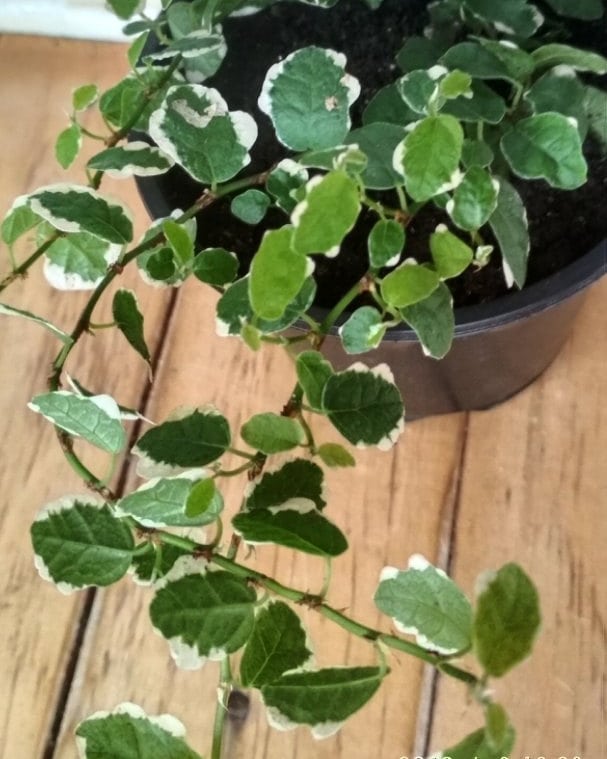

In the immediate vicinity of the branches, decorative poles or a net formed in a certain pattern are placed. By directing the shoots, you can gradually achieve complete braiding of the support. The options for forms for flower arrangements are incredible. Pumila easily develops on any proposed surface, forming the most unusual and intricate figures.
You can add Pumila to another variety, for example, to Benjamin's ficus.The flower will significantly decorate the surface of the pot, twisting branches around its walls.
5 / 5 ( 1 vote)
Growing difficulties
When growing ficus pumila, some difficulties may arise:
- Dry leaves. The most common cause is too bright light. Try shading the plant a little. If the flowerpot is located on the southern windowsill, move it to a different location.
- Fallen leaves. It may be necessary to check the temperature level and raise it to higher values. Drafts can also be the cause.
- Rotting root. Although the ficus pumila loves moist soil, excessive stagnation of water in the soil should not be allowed. The affected parts should be removed, and further watering should be slightly tempered.
- Spider mite. When it appears on the leaves, you can find a plaque in the form of a cobweb. It must be removed by hand and the plant treated with any insecticide.
- Mealybug. In the presence of this pest, a whitish coating can be seen on the green part. The problem is treated by using a systemic insecticide.
Important! The plant reacts sharply to mistakes in care. If you notice a problem in time, you can quickly fix it.
Ficus pumila is a beautiful plant with some whims in its care. If you adhere to all the rules for maintaining a flowerpot, it will delight the owner for a long time with a miniature and sophisticated look.
Crown formation
Pumila is a creeping liana-like shrub. Its shoots can be cut and equalized as much as you like, but they will continue to spread over the free area without changing their shape or rising up. To form its crown, you have to use more complex methods than simple pruning.
The popularity of ficuses is also facilitated by the interest that has appeared in recent years in bonsai - the cultivation of dwarf trees. All small-leaved species of the genus Ficus are very well suited for this in many respects and, in addition, are very unpretentious.
The most original way is to arrange creeping shoots in the form of a panel on the wall. Such decor is very popular today, especially when creating loft interiors. For its implementation, a figured frame filled with a substrate, which is held by a metal mesh, is hung on the wall. The ficus is planted in the center of the future composition, it takes root and grows within the given boundaries. All shoots out of their limits are cut off. As a result, after 2-3 months the wall is decorated with a magnificent green panel.
Decorative terrariums are becoming more and more common in interior design. With minimal maintenance, they look very impressive, and the dwarf ficuses in the terrarium are one of the most popular.
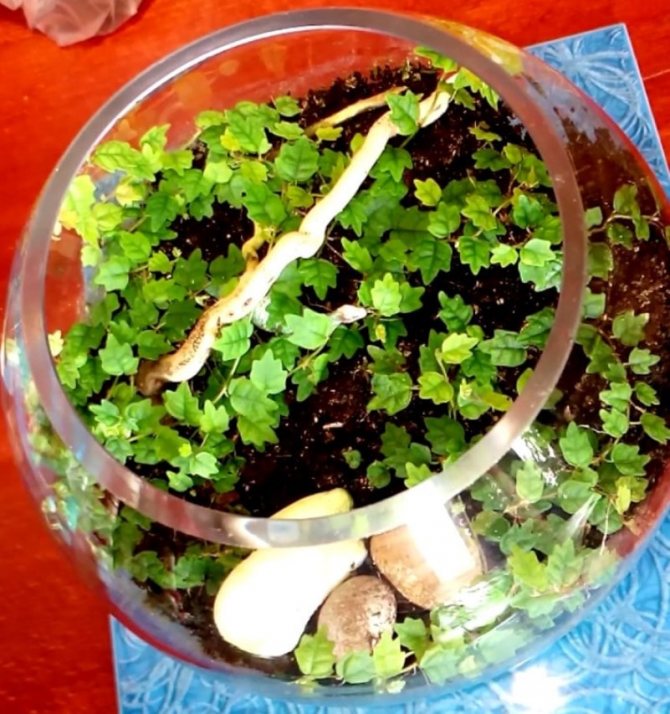

Composition of dwarf ficus Pumila Dubolistny in a glass vase
Fungal infections
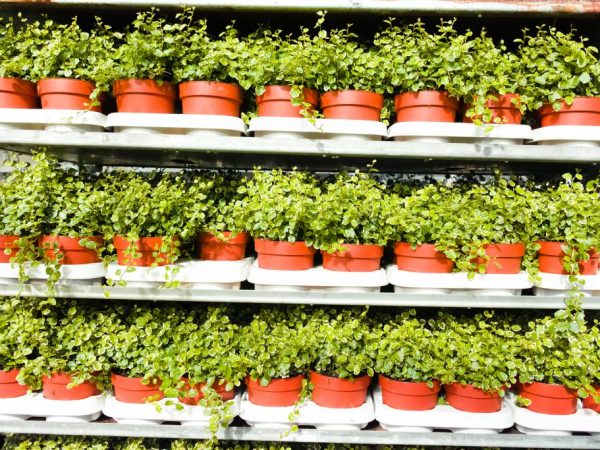

Ficus grows quickly and produces layers
Gray rot. Outside, the leaves are covered with dark mold, rot and fall off. It starts on a plant, usually due to improper watering regime. It is necessary to cut off the affected stems and reconsider the care of the flower.
A sooty mushroom. Plant in insect droppings. Easily removed with a cloth soaked in a solution of any fungicide. Repeat the procedure 2-3 times.
Root rot. The fungus settles in the roots, gradually climbing up the trunk. The disease is dangerous because it is difficult to detect it at the initial stage. Unfortunately, it cannot be treated. The only thing that can be done is to try to put the remaining shoots on the cuttings.


